Manuscript facsimile project
/In advance of reopening the Chapter Library and for a busy post-Covid exhibition plan, a project developed to digitise the collection of surviving medieval manuscript volumes.
Only two volumes held at the Cathedral had previously been reproduced in facsimile (see Textus and Hidden Treasures, Fresh Expressions and Custumale Roffense). Digital facsimiles provide accessible resources for researchers and public interpretation, as well as providing a record should the unthinkable occur.
Centuries before Johannes Gutenberg’s printing press, every volume within the Cathedral Priory library (and the whole world) was painstakingly produced in manuscript (‘handwritten’). Scriptoriums developed in monasteries throughout the known world, reproducing, reexamining and sharing the corpus of the Christian and Antique worlds.
Below is a list of facsimiles completed to date with descriptions, links to complete facsimiles and Sarah’s notes from behind the camera. We aim for the project to continue throughout 2021 and to include transcriptions and translations of all the manuscripts within the Chapter Library to truly open and preserve this collection for everyone.
Jacob Scott and Sarah Taylor
Psalter and kalendar fragments circa 1450
A psalter is a volume containing the Book of Psalms. These fragments have been rebound and were presented to the Cathedral in 1921 as there are references to early Bishops and saints of Rochester Paulinus and Ithamar, as well as Bishop Romanus. St Withburga is also mentioned in the Kalendar. Although probably produced for the Cathedral or Priory it shows Low-Countries influence.
Open complete facsimile here.
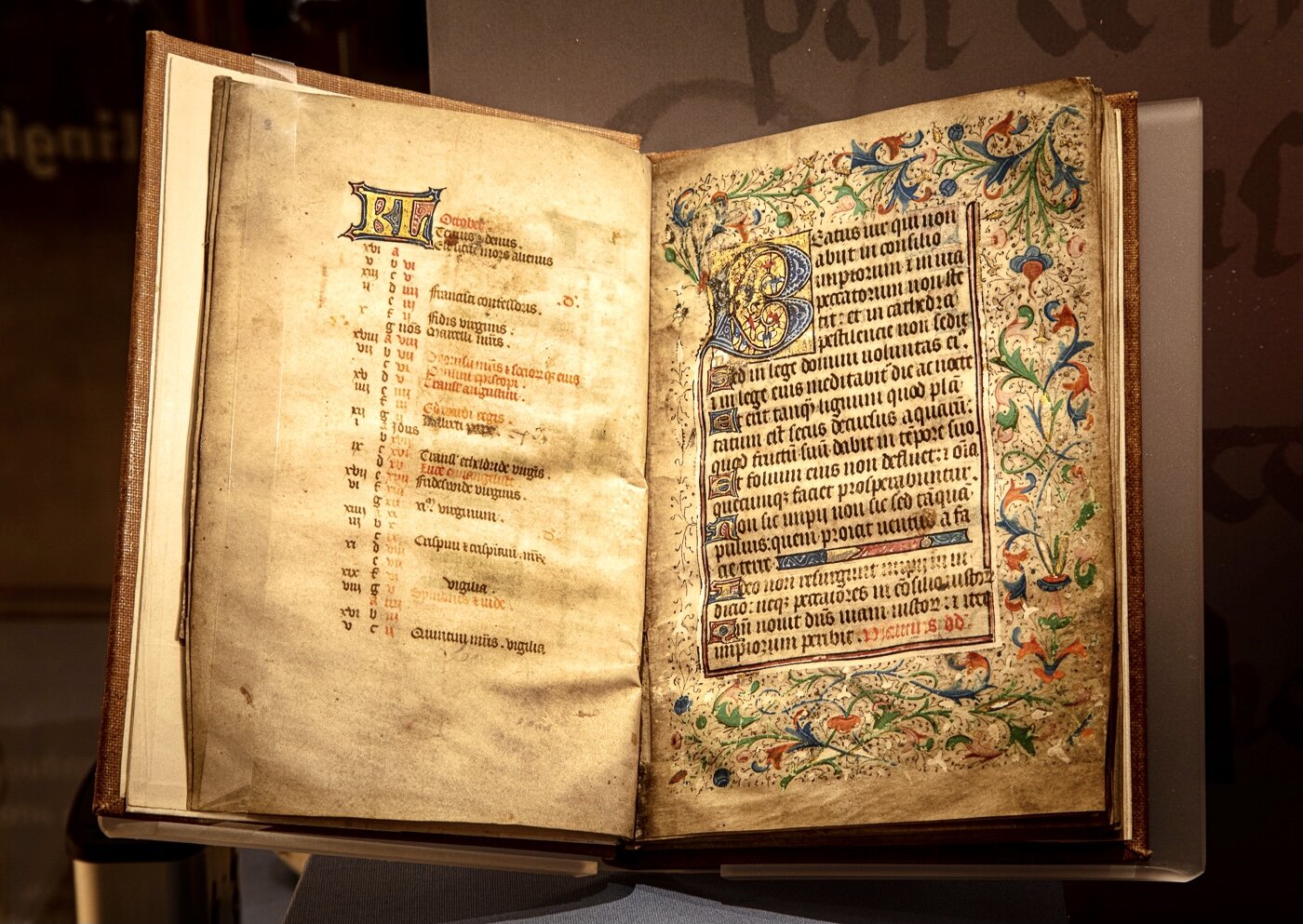
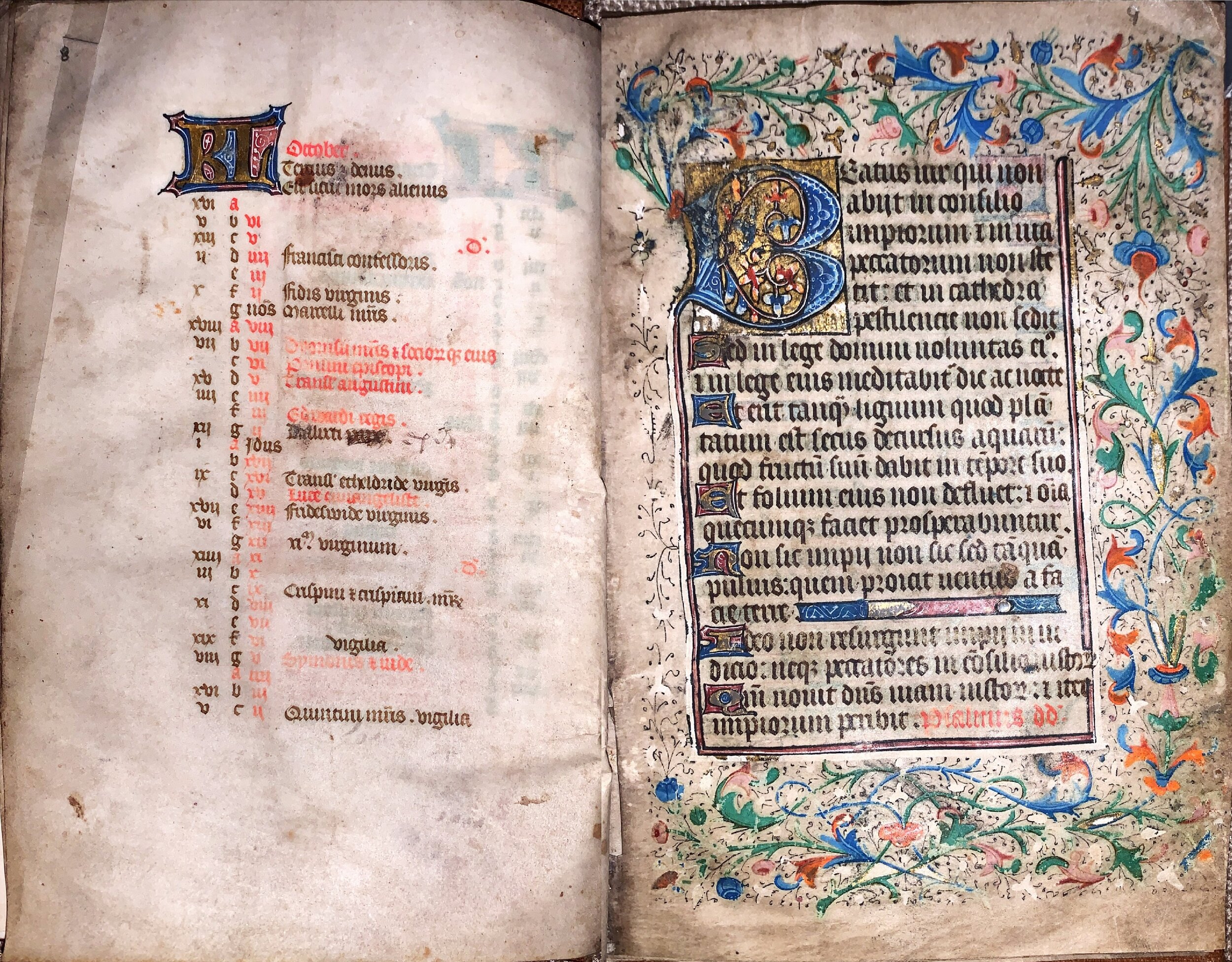


The visible construction lines in the book to help guide the writing and design the layout of each folio, were small reminders of the painstaking effort that went into producing every page. As an English teacher, to see these lines and the odd mistake from years ago was charming; as were the notes in the margin that corresponded to lines where the writer had run out of room and needed to add more text.
Book of Hours Fifteenth century
This small, almost pocket-sized manuscript is a fine example of a Book of Hours. From the fourteenth century, Books of Hours became immensely popular with the gentry and richer members of society as a way to emulate the spiritual devotional day of monks and nuns. The monastic day was divided into the eight offices of Matins, Lauds, Prime, Terce, Sext, None, Vespers and Compline.
Find out more in Dr Jayne Wackett’s post Book of Hours: a day in the life. Open the complete facsimile here.
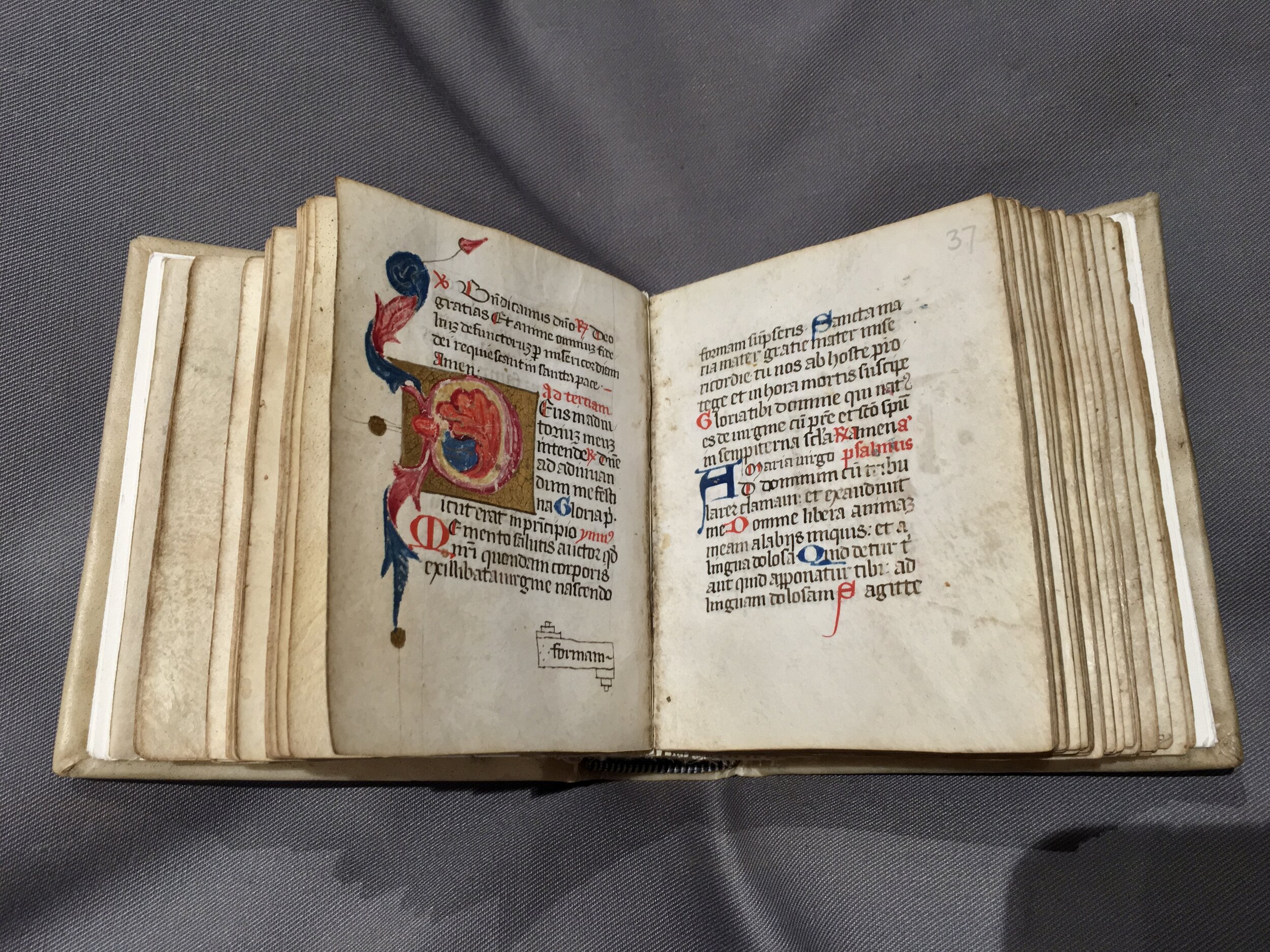


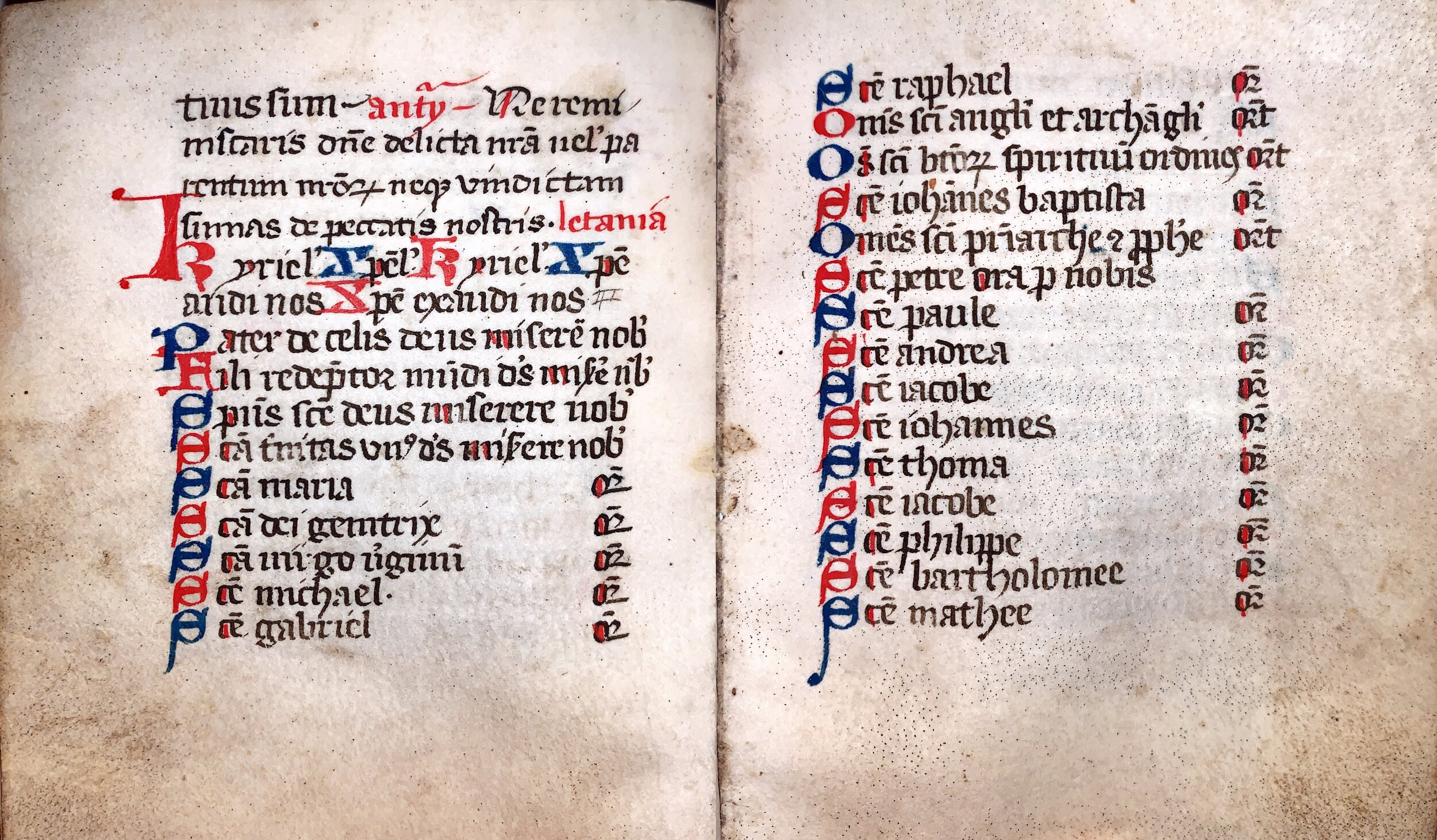
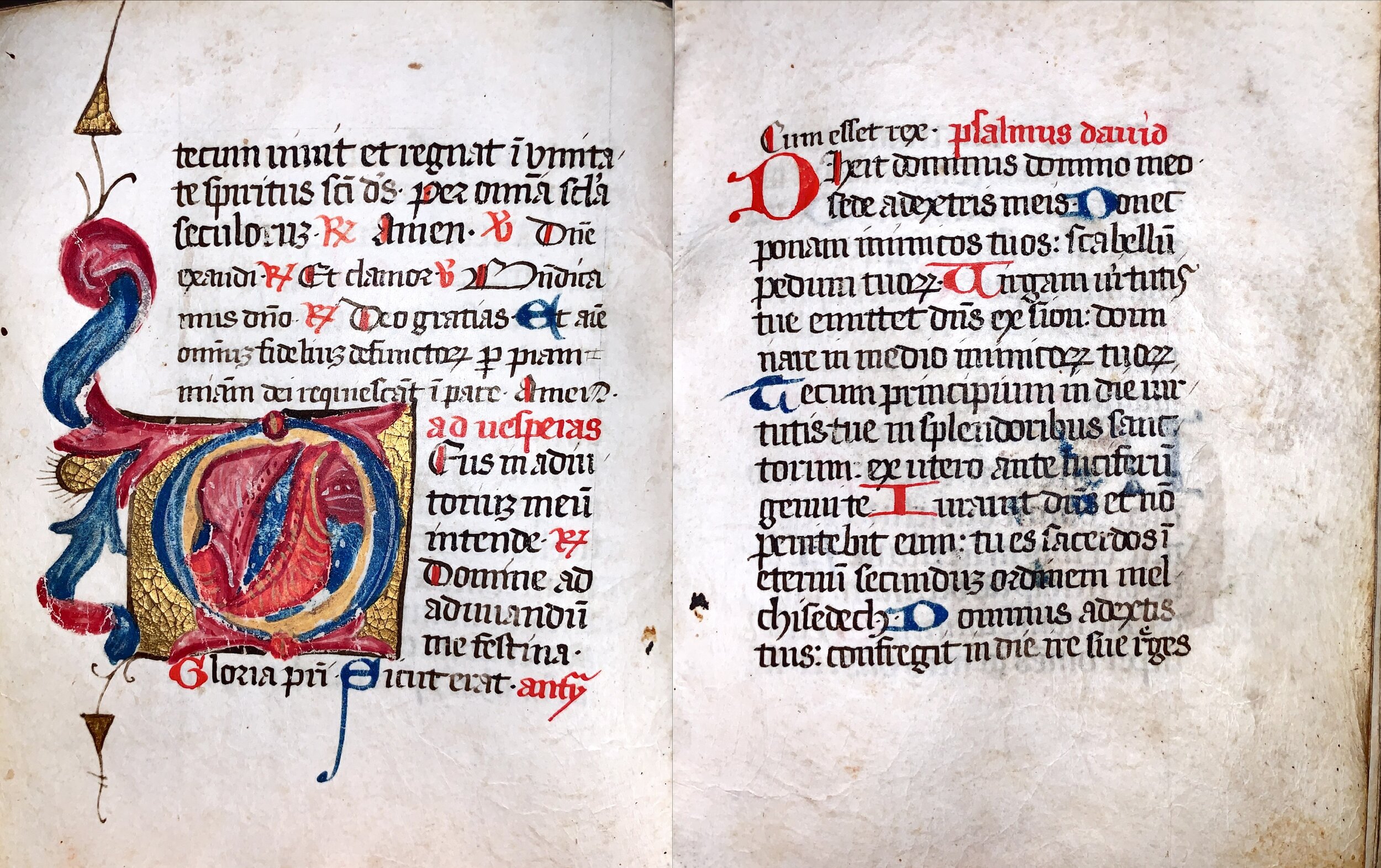
I became particularly fond of the Madonna and Child, to know that somebody sat there all those years ago working on this image and its fine features. The gold leaf here had cracked with repeated movement over the page, bringing to mind the artist surrounded by clouds of gold leaf and pots of bright reds and blues.
Treatise called the Image of Life
This mysterious volume is apparently similar to Wellcome Library MS.446, being a treaty of alchemy. Alchemy is best known for its quest for the fabled philosopher’s stone, but was also an art and a scientific and technological project that foreshadowed modern chemistry. The volume awaits translation and indexing, but reminds us of the diverse topics that once would have filled the shelves of the priory library.
Open the complete facsimile here.

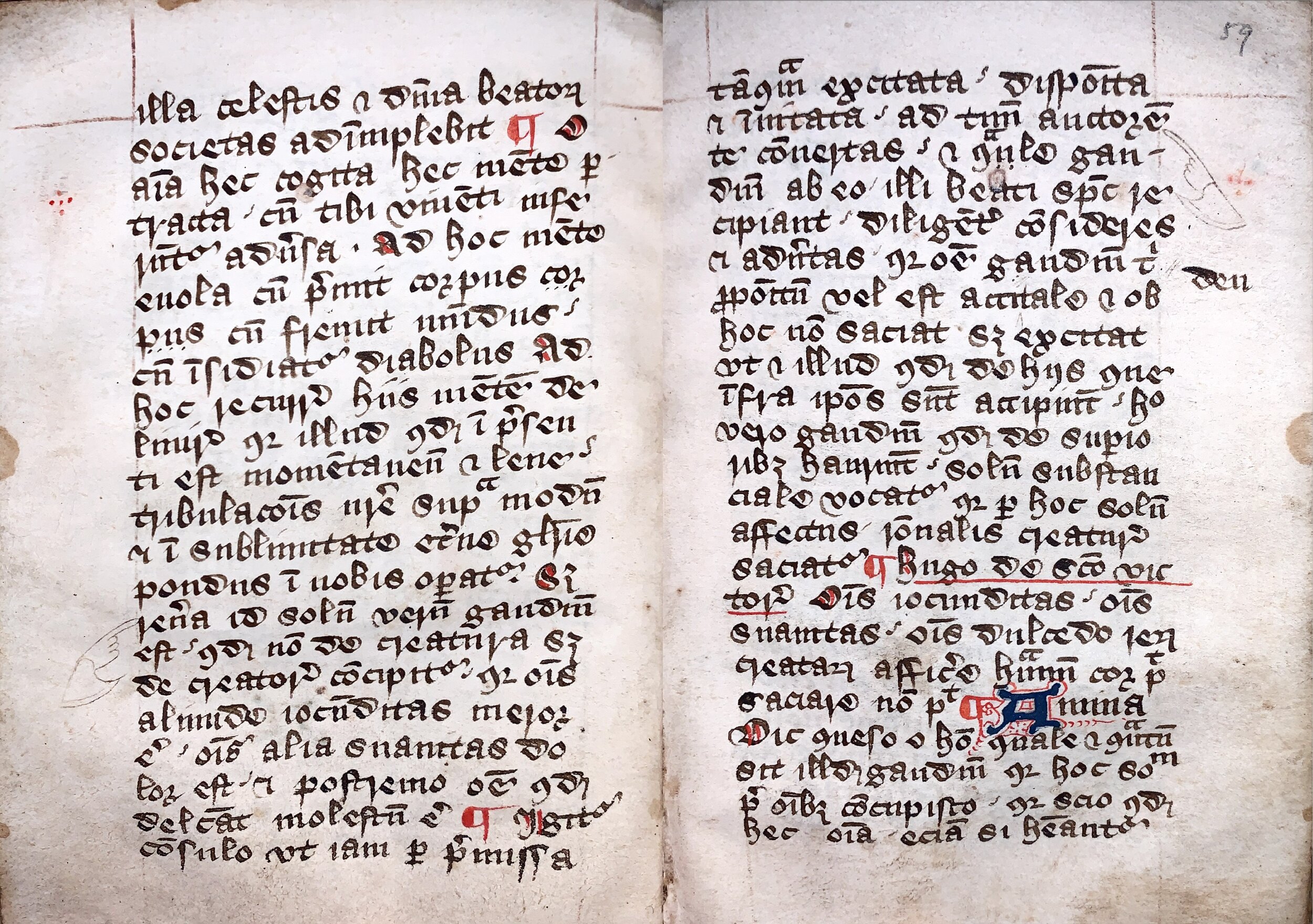
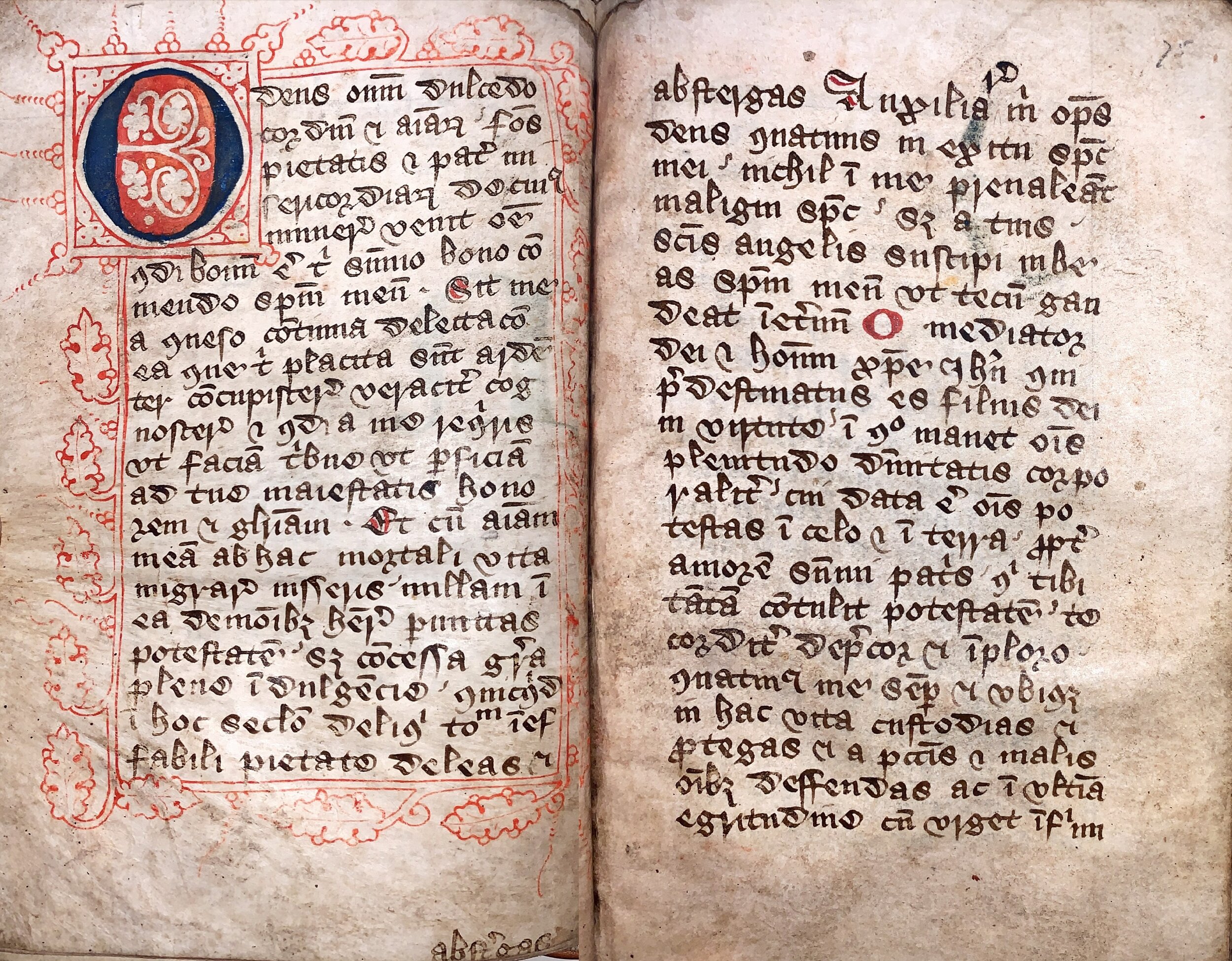
The vivid colours of the frontispiece heart with its piercing scroll was so fine it seemed almost like a fresh tattoo or an album sleeve. Throughout the manuscript, there are small, delicate hand symbols used as markers for particular points of interest and reference, not too dissimilar from how we would use sticky notes and page tabs today. It makes you wonder what information within this volume the monks had need to refer to so often.
Saint Augustine’s Harmony of the Gospels circa 1100
This mediaeval manuscript is the oldest book remaining in the Chapter Library. A gospel harmony is an attempt to compile the canonical gospels of the Christian New Testament into a single account. The binding boards are centimetre-thick oak panels, probably original, and the volume is largely as it would have been within the Priory library at the turn of the twelfth-century.
Find out more in Beverley Jacob’s post St Augustine’s Harmony of the Gospels. Open the complete facsimile here.
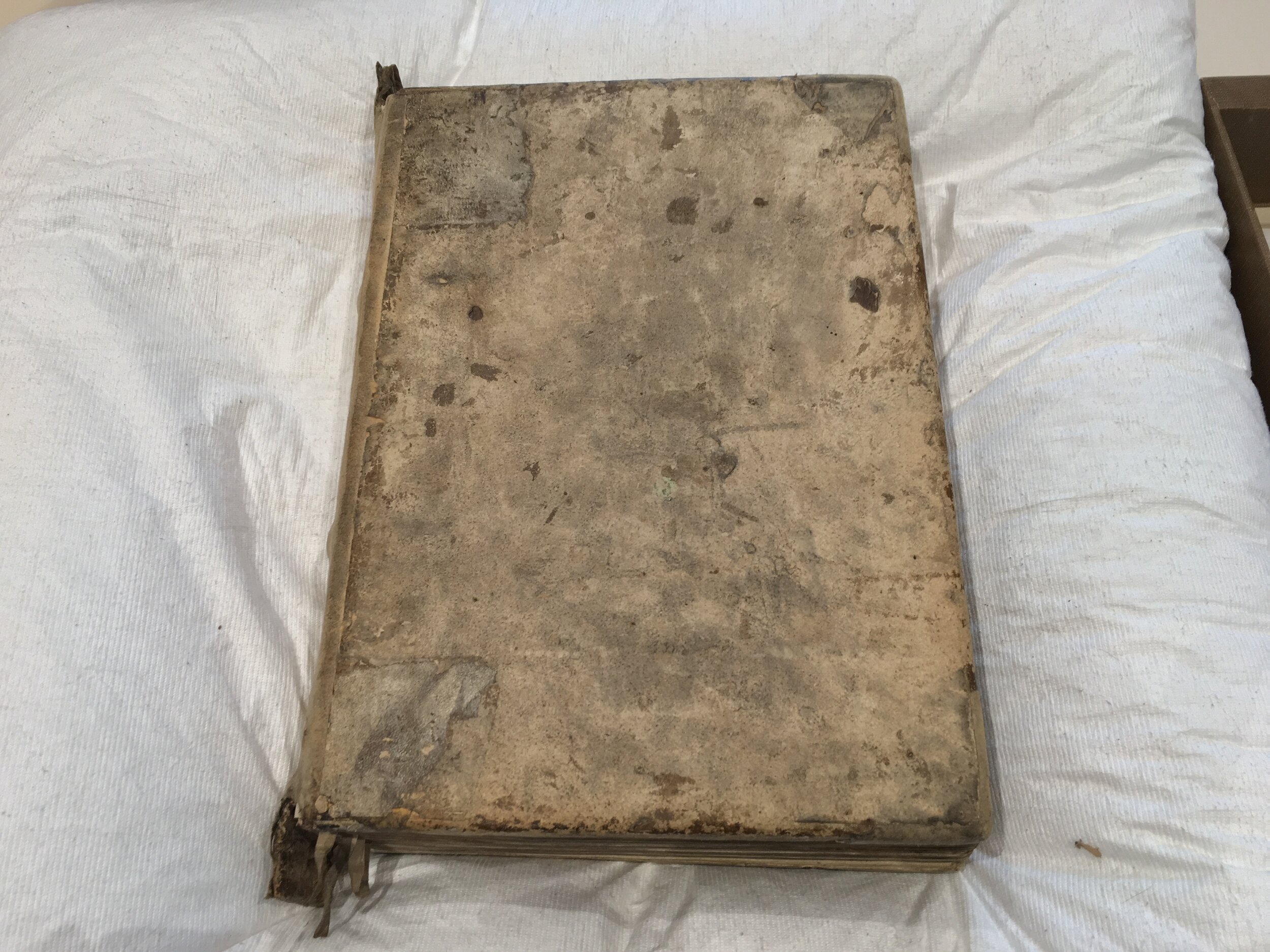


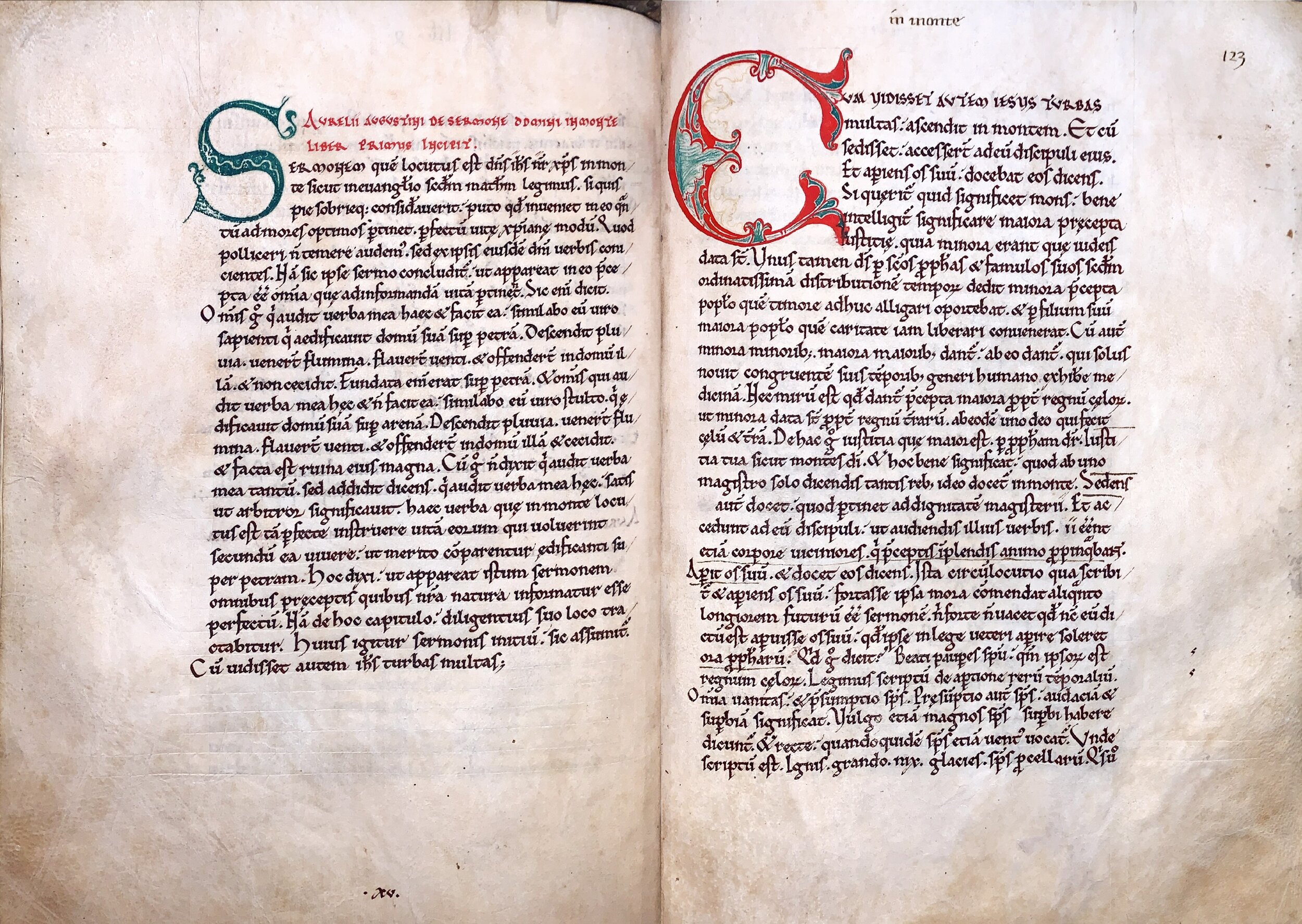
The Harmony of the Gospels contained holes in the vellum, from scars and insect bites that lived over 900 years ago. You can find out more about the production of vellum manuscripts in the video Scribal Practices in Textus and Hidden Treasures, Fresh Expressions.
Lombard’s Book of Sentences
The Four Books of Sentences (Libri Quattuor Sententiarum) is a book of theology written by Peter Lombard in the 12th century. It is a systematic compilation of theology, written around 1150. The Book of Sentences had its precursor in the glosses; explanations or interpretations of a text. This is a huge volume, with many hundreds of annotations.
This facsimile is still being worked on at time of writing. A facsimile of folios 1r to 104v is available here.
Pope Gregory IX Decretals C14th
As well as manuscript volumes, the Chapter Library contains a small collection of loose leaves and folio fragments, often found cut up to line seal bags or used in the binding of later books, only to be liberated by inquiring minds from later centuries.
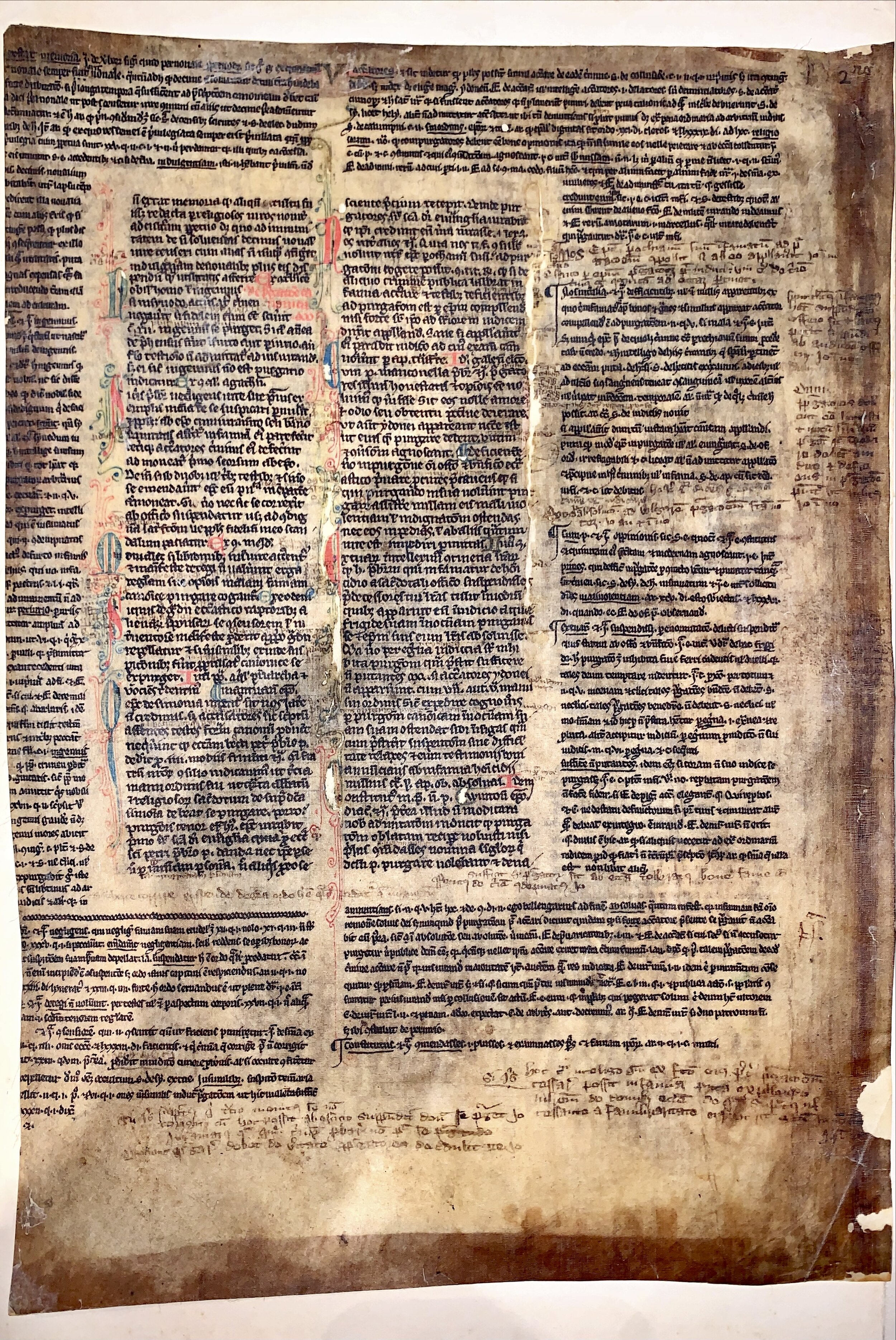
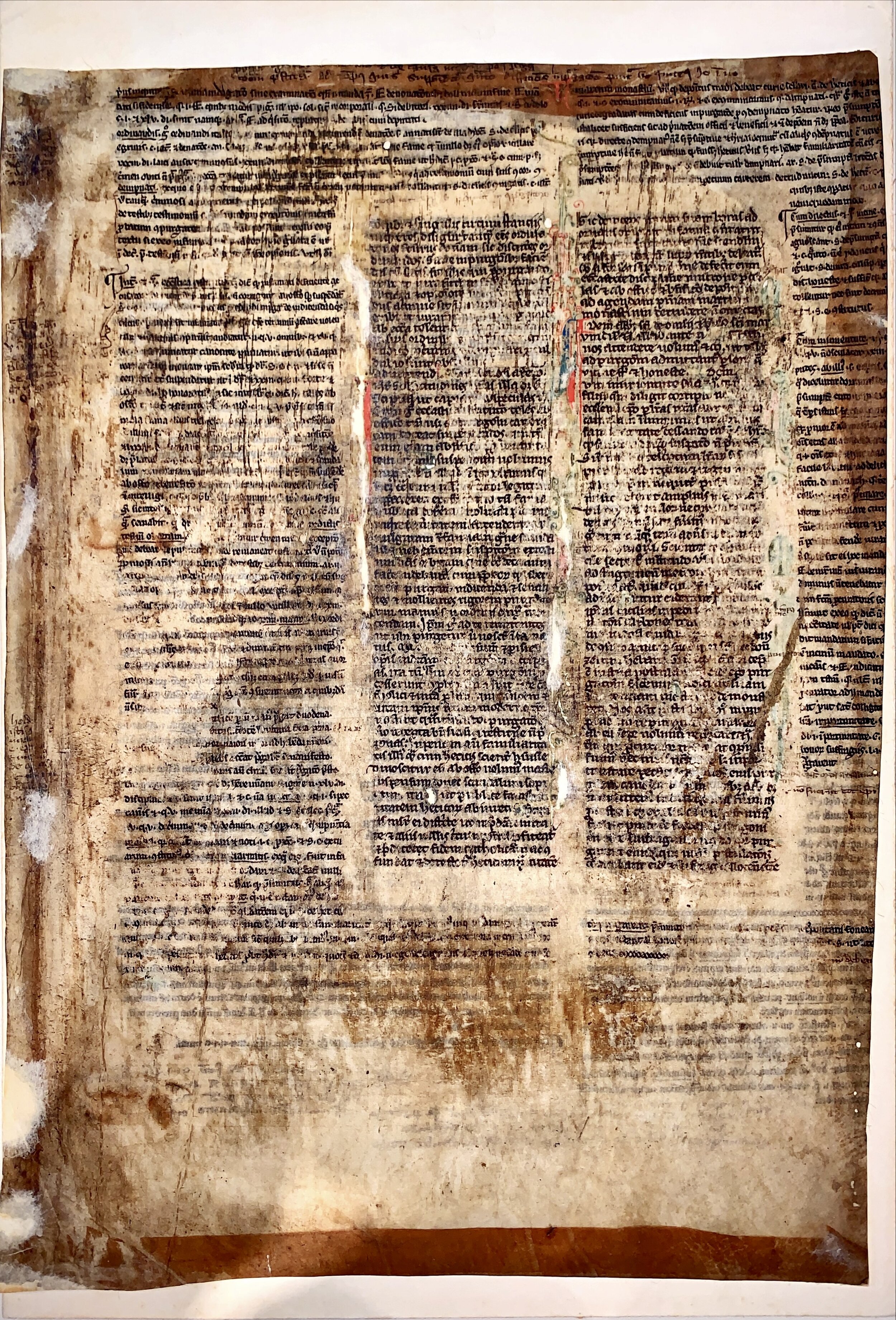
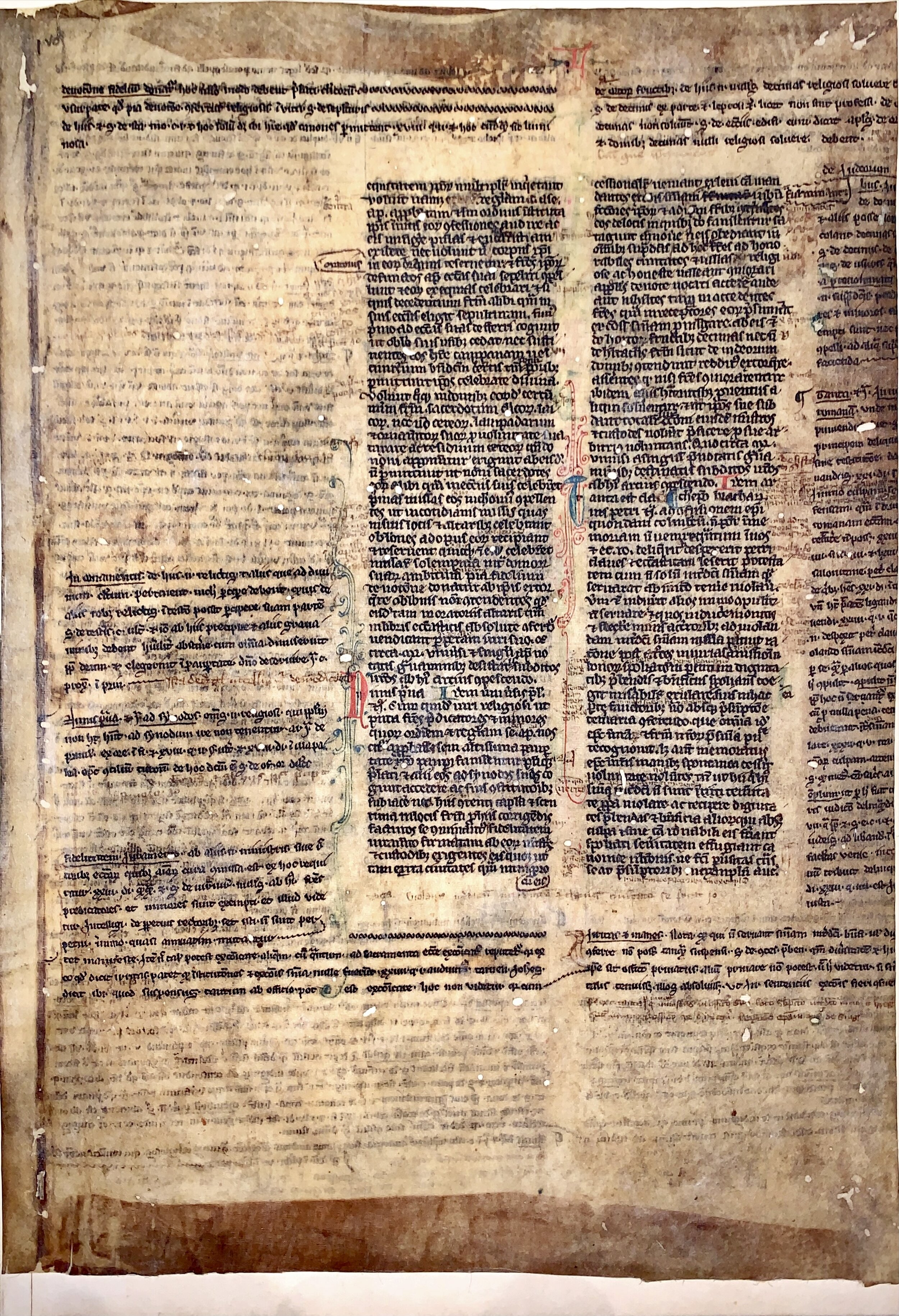
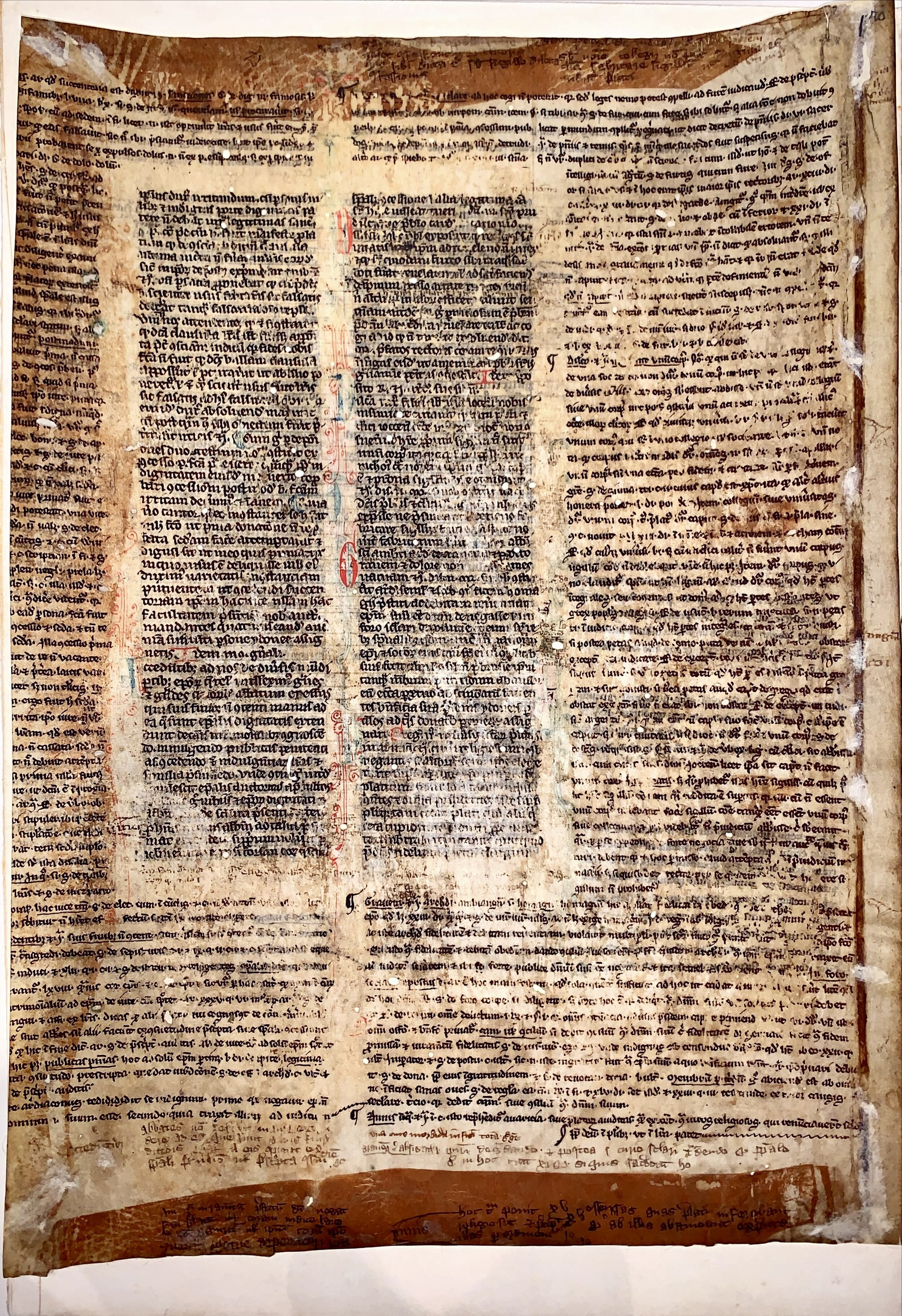
The leaves of the Decretals win the prize for the most economic use of space, but is not untypical for a medieval manuscript. They serve to remind us of a time before the printing press and of inexpensive paper, when words and vellum were precious resources.
Snodland parchment fragments Fourteenth century
This single and rather sad leaf of parchment discovered in a chimney in Snodland reminds us of how fragile the medieval manuscripts of the world are, and how lucky we are to remain custodians of these rare insights into the medieval world.

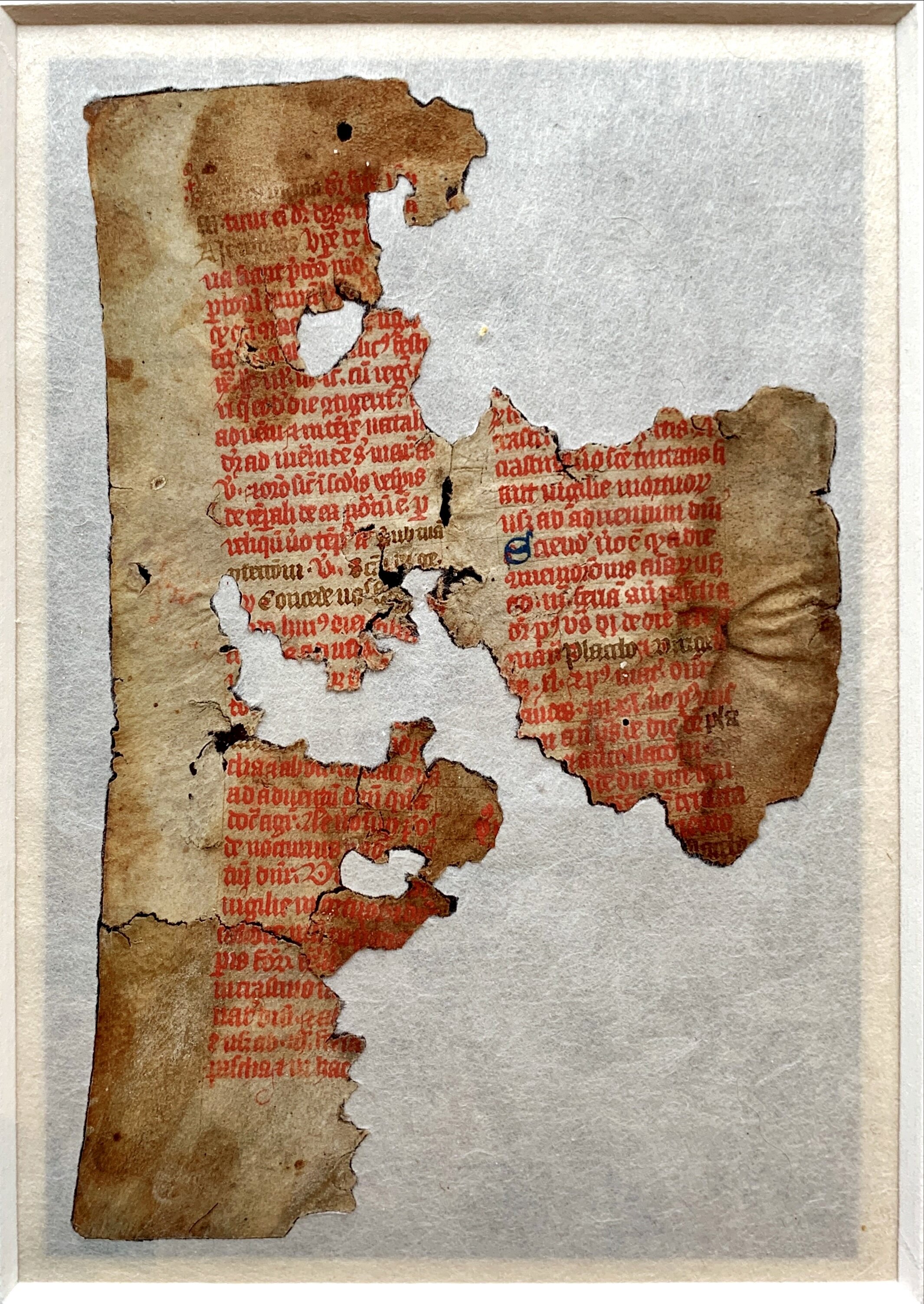
The conservation and digitisation of the library collections is an ongoing project, preserving and opening this unique corpus. Contact info@rochestercathedral.org to get involved!



